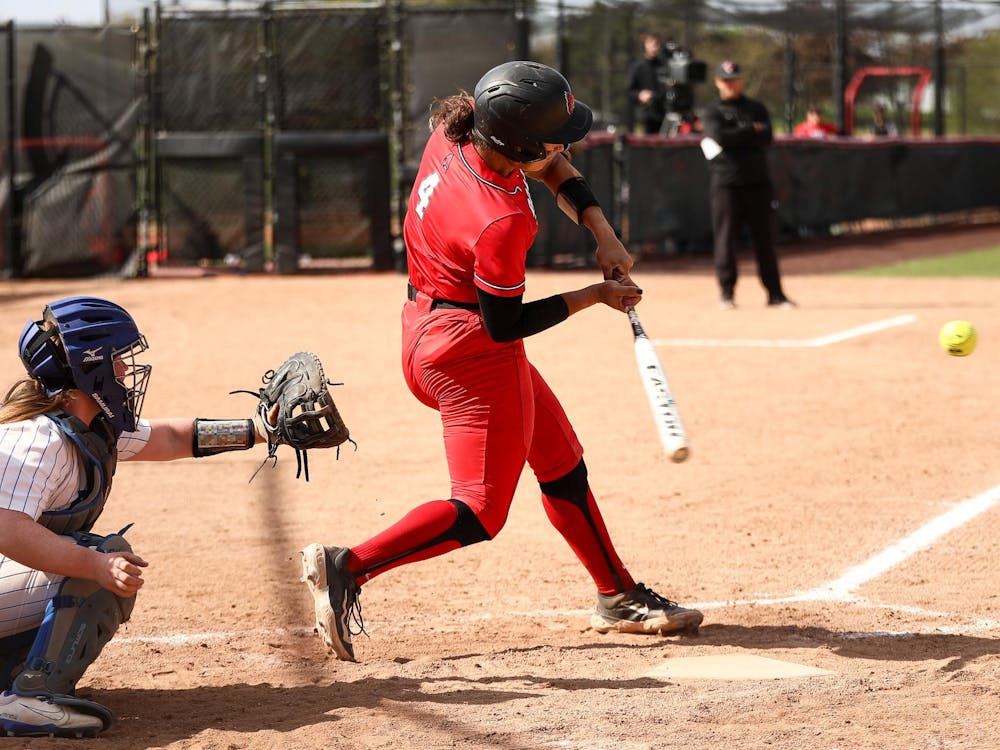Ball State's new offensive mindset is easy enough to grasp on paper, no matter which of the team's players is explaining it.
The setter increases the pace of the offense. The ball gets out to the pins faster. The attackers have a better picture of the court with less blockers at the net to meet them.
In theory, it's the perfect remedy to Ball State's struggling offense. It's the matter of putting the system into action that is proving to be more difficult.
"It's just taking me a little bit [of time] to get used to it," right-side attacker Jamion Hartley said. "It's kind of throwing me off guard, and it's supposed to throw the other team off guard."
Hartley isn't the only player finding it hard to adapt. Freshman outside attacker Shane Witmer has also said how he hopes he and his teammates will be able to pick up the system sooner rather than later.
Time hasn't been on Ball State's side in that process, though.
After moving to a faster offense for a portion of practice last Tuesday, the team began to fully use it on Wednesday. That fell one day before Ball State's match with Lindenwood, leaving the team with only one day of preparation before the increased tempo was used in a match.
The immediate results were mixed. Despite recording a decent attack percentage of .236, several players struggled to modify their play to the faster pace.
Those problems temporarily ended in the first set of Ball State's win over Quincy two days later. A series of quick sets by Graham McIlvaine and laser kills by Shane Witmer caught Quincy blockers off guard and gave the Cardinals a hot start. They hit .500 in the frame.
Ball State didn't match that level of play in the remainder of the match, but the flash of production was all that was needed to show the team could be productive under the new offensive style.
Walton said whether or not the speed and intensity on the offense continues to improve likely depends on sophomore setter Graham McIlvaine. More pressure than ever will be put on the precision and control of his sets now that he must play at a quicker pace.
"The faster you run your offensive tempo, the more exact, the more precise your setter has to be for it to work," Walton said. "If your setter can't be consistent with his location, then what you run into are a lot of bad situations [and] bad opportunities for your outside attackers. It becomes very difficult to produce any kind of numbers at that point."
More experience and reps could eventually put an end to any confusing moments on the court for players like Hartley. In the meantime, he said he's doing his best to keep up to speed in the increased tempo.
"It may not seem like, because I feel like I'm getting blocked a lot more, but I feel like I am seeing the block a lot better," Hartley said. "It's just the ball is not in the right place, where it's supposed to be right now, so I feel like I'm just pulling it into the block. Once we get a few more reps in, I'll be able to take advantage of the balls that Graham is setting me."
Several issues may exist now with Ball State's transition to new offensive methods, but for now, the overall goal is about making any surges of offense stick.
"Our goal is going to be steady improvement," coach Joel Walton said. "This isn't a quick fix. This isn't something that you do for a week, and then it miraculously works. This is something we've got to focus on every day in practice. We've got to make sure guys understand tempo, location of sets and how to get in good position to attack.
"But it's continuous. And it's daily work that we have to do with our guys to build into the whole team."
For more men's volleyball coverage, follow @andrewmishler on Twitter.




